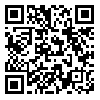Volume 12, Issue 2 (June 2025)
Avicenna J Neuro Psycho Physiology 2025, 12(2): 96-102 |
Back to browse issues page
Ethics code: KUMS.REC.1402.590
Download citation:
BibTeX | RIS | EndNote | Medlars | ProCite | Reference Manager | RefWorks
Send citation to:



BibTeX | RIS | EndNote | Medlars | ProCite | Reference Manager | RefWorks
Send citation to:
Mirzaei-Alavijeh M, Moradinazar M, Karimi N, Jalilian F. Childbirth Decisions: How Socio-economic Determinants and Tokophobia Shape Delivery Choices. Avicenna J Neuro Psycho Physiology 2025; 12 (2) :96-102
URL: http://ajnpp.umsha.ac.ir/article-1-529-en.html
URL: http://ajnpp.umsha.ac.ir/article-1-529-en.html
1- Social Development and Health Promotion Research Center, Health Policy and Promotion Research Institute, Kermanshah University of Medical Sciences, Kermanshah, Iran.
2- Department of Health Education and Promotion, School of Health, Kermanshah University of Medical Sciences, Kermanshah, Iran. ,f_jalilian@yahoo.com
2- Department of Health Education and Promotion, School of Health, Kermanshah University of Medical Sciences, Kermanshah, Iran. ,
Abstract: (677 Views)
Background and Objective: Tokophobia—a pathological fear of childbirth—can significantly influence maternal health and delivery choices. The present study examines how socio-demographic factors, previous birth experiences, and tokophobia affect delivery preferences among pregnant women in western Iran.
Materials and Methods: This descriptive-analytical study was conducted on a sample of 1,001 pregnant women in Kermanshah, Iran, in 2024. Participants were selected using a combination of cluster and simple random sampling. The validated Tokophobia Assessment Questionnaire (TAQ), developed by Nunes et al., was used to measure tokophobia levels. Data were analyzed using descriptive statistics, chi-square tests, and linear regression in the SPSS (version 16) software.
Results: Younger women (≤20 years) are significantly more likely to prefer cesarean delivery (P < 0.001), while older women, particularly those aged 31-39 and ≥40, opt for natural birth. The number of children strongly affects delivery preferences (P < 0.001), with nulliparous women favoring cesareans and those with three or more children choosing natural birth. A history of abortion is also significantly associated (P < 0.001), as women with past miscarriages tend to prefer natural delivery. Lower education levels and housewife status correlate with higher cesarean rates (P < 0.001), while university-educated and employed women prefer natural birth. Participating in childbirth classes significantly increases the likelihood of a natural delivery (P = 0.014). Tokophobia levels are markedly higher in cesarean births (P < 0.001), particularly in physical summation, panic (P = 0.0042), social involvement (P = 0.0041), and self-perception of tokophobia.
Conclusion: Cesarean preference is higher among younger, less-educated women, influenced by fear and lack of information, while experienced and educated women opt for natural birth. Socio-economic determinants and tokophobia play a key role, necessitating education, counseling, and equitable healthcare policies to reduce fear and improve maternal outcomes.
Materials and Methods: This descriptive-analytical study was conducted on a sample of 1,001 pregnant women in Kermanshah, Iran, in 2024. Participants were selected using a combination of cluster and simple random sampling. The validated Tokophobia Assessment Questionnaire (TAQ), developed by Nunes et al., was used to measure tokophobia levels. Data were analyzed using descriptive statistics, chi-square tests, and linear regression in the SPSS (version 16) software.
Results: Younger women (≤20 years) are significantly more likely to prefer cesarean delivery (P < 0.001), while older women, particularly those aged 31-39 and ≥40, opt for natural birth. The number of children strongly affects delivery preferences (P < 0.001), with nulliparous women favoring cesareans and those with three or more children choosing natural birth. A history of abortion is also significantly associated (P < 0.001), as women with past miscarriages tend to prefer natural delivery. Lower education levels and housewife status correlate with higher cesarean rates (P < 0.001), while university-educated and employed women prefer natural birth. Participating in childbirth classes significantly increases the likelihood of a natural delivery (P = 0.014). Tokophobia levels are markedly higher in cesarean births (P < 0.001), particularly in physical summation, panic (P = 0.0042), social involvement (P = 0.0041), and self-perception of tokophobia.
Conclusion: Cesarean preference is higher among younger, less-educated women, influenced by fear and lack of information, while experienced and educated women opt for natural birth. Socio-economic determinants and tokophobia play a key role, necessitating education, counseling, and equitable healthcare policies to reduce fear and improve maternal outcomes.
Article Type: Research Article |
Subject:
Mother and child health
Received: 2025/05/20 | Accepted: 2025/06/15 | Published: 2025/06/20
Received: 2025/05/20 | Accepted: 2025/06/15 | Published: 2025/06/20
Send email to the article author
| Rights and permissions | |
 |
This work is licensed under a Creative Commons Attribution-NonCommercial 4.0 International License. |







